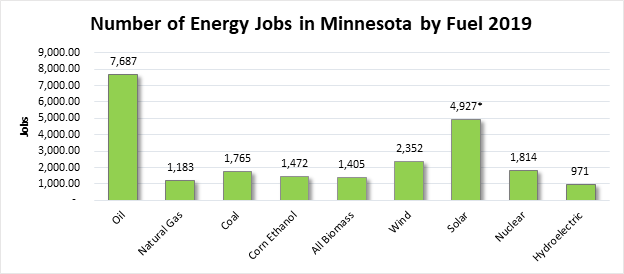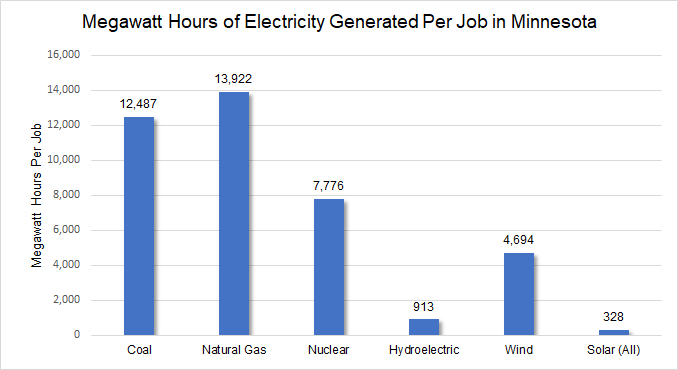Energy Efficiency, Renewable Energy Sectors Shed 85,000 Jobs in March Due to COVID-19
Wind and solar special interest groups often claim that these sources of energy are an economic engine for the United States. However, as my colleague Martha has written, these sectors don’t actually produce very much electricity per job, which is the entire point of the energy industry. Now, a new report shows that energy efficiency jobs and the renewable energy sector lost more than 85,000 jobs in the month of March due to the COVID-19 outbreak.
According to the study, 69,800 jobs in energy efficiency were lost in March, and 16,500 jobs were lost in the renewable energy industry. These jobs losses are regrettable because people depend upon them to put food on the table. However, it is not surprising that renewable energy jobs were shed during downturn given their lack of productivity compared to other electricity generation sources.
For example, supporters of more renewable energy mandates in Minnesota often tout an annual report by Clean Energy Economy Minnesota (CEEM), a renewable energy special interest group that touts the number of “clean energy” as justification for even more government mandates for wind and solar in our state. The graph below shows the number of jobs in each energy sector of Minnesota’s economy. Oil produces the most, with solar and wind following.

Oil is primarily used in transportation and wind and solar are used for electricity generation. So if we exclude oil and only look at electricity side of the energy equation, wind and solar appear to be the major employers in the energy industry.
However, when one looks at the number of megawatt hours of electricity generated by each source of electricity, divided by the number of people employed in that industry, we get a measure of how productive each energy job is. By this metric, wind and solar jobs are much less productive than other energy sources, with per-worker electricity generation far below natural gas, coal, and nuclear power.
Solar power, the sector with the most jobs, was the least productive of all energy sources.

Productivity is incredibly important. Minnesota could employ a lot more farmers (and horses) if we banned the use of tractors and modern equipment, but the amount of food we grow would likely decline. This doesn’t benefit anyone, it simply makes a process that is already efficient, less efficient.
Hopefully we can reopen Minnesota’s economy sooner than later, and the hardworking men and women in the energy efficiency sector, which consists almost entirely of people who install energy efficient lights, heating, ventilation and air conditioning (HVAC), and those who manufacture and install energy efficient doors and windows can get back to work as soon as possible.
These jobs are good jobs that reduce our need for energy, which in turn can help us reduce energy costs. This is why these jobs would exist even if there were no mandates for wind and solar in our state.